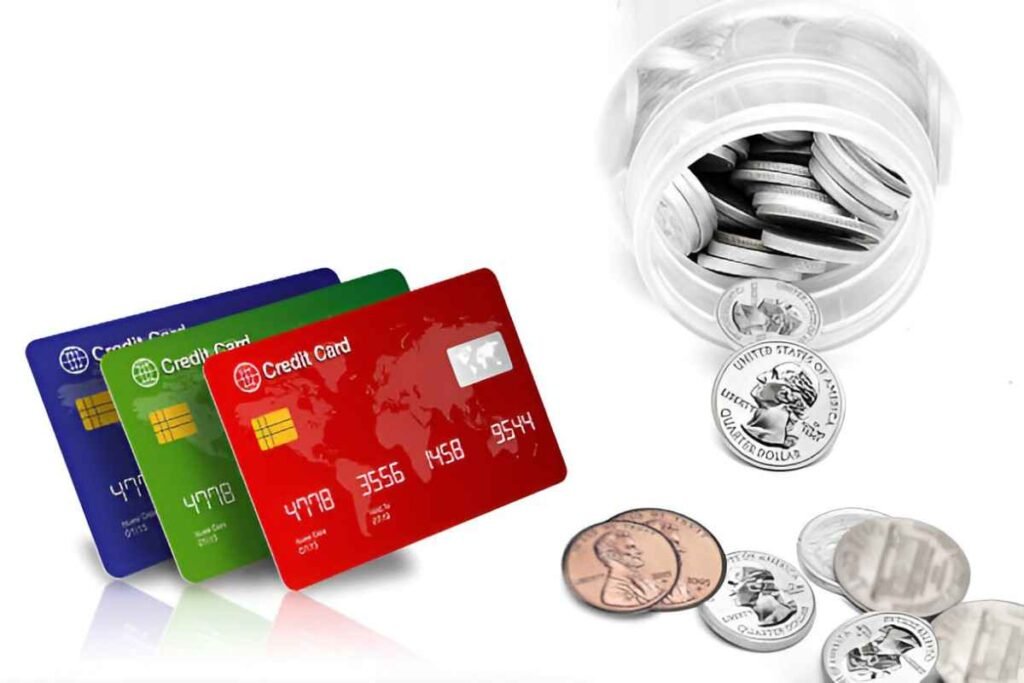When it comes to choosing a credit card, I understand that it can be an overwhelming decision with so many options available in the market. One card that I recently came across and decided to take a closer look at is the Altitude Go Credit Card. In this article, I will provide a detailed overview of this card, its features, benefits, and drawbacks, and offer a comparison to other similar cards to help you determine if it’s the right choice for you. Additionally, I’ll walk you through some practical examples and calculations to help illustrate how to maximize the card’s rewards.
Table of Contents
What is the Altitude Go Credit Card?
The Altitude Go Credit Card is a travel rewards credit card offered by U.S. Bank. It is designed to provide users with a straightforward and accessible way to earn rewards on everyday purchases. One of the highlights of this card is its reward structure, which focuses on providing higher points on common spending categories like dining and grocery shopping. Unlike some other cards that may require complicated points systems or annual fees, the Altitude Go card aims to offer simplicity and value.
Key Features of the Altitude Go Credit Card
Before diving deeper into the benefits and comparisons, let’s start with a quick look at the key features of the Altitude Go card:
- Reward Rate: 4x points on dining, 2x points on grocery store purchases, and 1x point on all other purchases.
- Sign-Up Bonus: 20,000 points after spending $1,000 in the first 90 days.
- No Annual Fee: One of the standout features of this card is that it comes with no annual fee, which makes it a more attractive option for users who don’t want to pay extra just to have a card.
- Redemption Options: You can redeem points for travel, gift cards, merchandise, or even cash back. The points are fairly flexible and can be used for various purposes.
- Intro APR: 0% intro APR on purchases for the first 12 billing cycles, which can help if you plan to make a large purchase or carry a balance temporarily.
Now that we have an overview, let’s break down the benefits and drawbacks of this card.
Benefits of the Altitude Go Credit Card
- High Earning Potential on Dining
I’ve found that one of the biggest advantages of this card is the 4x points on dining purchases. For anyone who dines out frequently or orders food delivery, this can add up quickly. Whether it’s at a restaurant, a fast-casual joint, or through a food delivery service, the Altitude Go offers a generous reward rate. - Good Value on Groceries
With 2x points on grocery store purchases, this card is a solid option if you find yourself frequently buying groceries. It’s not as high as the 4x on dining, but it’s still a better rate than many other cards that offer 1x or 1.5x points on groceries. For someone like me who often shops for food at major grocery chains, this is a helpful benefit. - No Annual Fee
Unlike many rewards cards that charge an annual fee, the Altitude Go doesn’t have one. This is especially attractive for individuals who don’t want to be burdened by additional costs just for holding a card. This also means that the rewards you earn are essentially pure value without any upfront costs, which is a feature I appreciate. - Sign-Up Bonus
The Altitude Go offers a sign-up bonus of 20,000 points after spending $1,000 in the first 90 days. This can be a great way to get a jump start on earning rewards if you plan to make purchases soon after getting the card. - Flexibility in Redemption
Points earned with the Altitude Go can be redeemed for various rewards, including travel, merchandise, and even cash back. This flexibility is a big plus for anyone who likes having options when it comes to using their points.
Drawbacks of the Altitude Go Credit Card
- Lower Reward Rate on Non-Dining Purchases
While 1x point on all other purchases isn’t terrible, it’s not the most competitive rate. For those who make a lot of purchases outside dining and groceries, the rewards on this card may feel underwhelming compared to other cards that offer higher rates in more categories. - Limited Travel Perks
Although this card is marketed as a travel rewards card, it doesn’t offer some of the more premium travel perks that other cards in the market provide, such as airport lounge access or travel insurance. If you are looking for those kinds of benefits, you might want to consider a different card. - Limited Redemption Options for Travel
While you can redeem your points for travel through the Altitude Go, the redemption options are limited compared to other travel-specific cards. If you’re someone who travels frequently and wants to book flights or hotels with ease, this could be a drawback for you.
How the Altitude Go Credit Card Compares to Other Cards
To help illustrate how the Altitude Go stacks up against other cards in its category, I’ve put together the following comparison table. This will give you a clear side-by-side look at the reward rates and benefits of similar cards.
| Credit Card | Reward Rate | Annual Fee | Sign-Up Bonus | Additional Benefits |
|---|---|---|---|---|
| Altitude Go Credit Card | 4x points on dining, 2x on groceries, 1x on other | $0 | 20,000 points after $1,000 spend in 90 days | No annual fee, 0% APR for 12 months |
| Chase Sapphire Preferred | 2x points on travel and dining, 1x on other | $95 | 60,000 points after $4,000 spend in 3 months | 2x on travel and dining, travel insurance benefits |
| Capital One Quicksilver | 1.5x points on all purchases | $0 | $200 cash back after $500 spend in 3 months | Unlimited 1.5% cash back on all purchases |
| Blue Cash Preferred® Card from American Express | 6% on groceries, 3% on transit, 1% on other | $95 | $350 statement credit after $3,000 spend in 6 months | 6% cash back on groceries, 3% on transit |
From the table, we can see that the Altitude Go is a more specialized card with higher rewards for dining and grocery shopping but lacks some of the higher sign-up bonuses or premium perks offered by other cards. If your spending habits align with the categories where the Altitude Go excels, this card can be a good option. However, if you’re looking for broader rewards or travel-specific perks, cards like the Chase Sapphire Preferred might be better suited for you.
Maximizing the Rewards on Your Altitude Go Card
To make the most of the Altitude Go card, it’s important to focus on the categories that offer the highest rewards. Here’s an example of how I would maximize the rewards on this card:
- Let’s say I spend $300 per month on dining, $200 per month on groceries, and $100 on other purchases.
- For dining, I would earn 4x points, which equals 1,200 points per month (300 x 4).
- For groceries, I would earn 2x points, which equals 400 points per month (200 x 2).
- For other purchases, I would earn 1x point, which equals 100 points per month (100 x 1).
In total, I would earn 1,700 points per month, or 20,400 points annually. If I reach the sign-up bonus by spending $1,000 within the first 90 days, I’ll have an additional 20,000 points. This brings my total to 40,400 points in the first year.
Is the Altitude Go Credit Card Right for You?
The Altitude Go Credit Card is a solid choice for someone who values simplicity and high rewards on dining and grocery purchases. Its no-annual-fee structure makes it an accessible card for those who don’t want to deal with additional costs. However, it may not be the best option if you’re looking for premium travel perks or a broader reward structure.
I recommend this card to people who spend a significant amount on dining and groceries and want a straightforward way to earn rewards. If your spending habits align with the benefits of this card, it can be a great addition to your wallet. For those who have more complex spending needs or want top-tier travel perks, it may be worth considering other cards that offer more comprehensive benefits.
Conclusion
In summary, the Altitude Go Credit Card offers a balanced combination of rewards and simplicity. While it may not have the most luxurious perks, it provides solid earning potential in key spending categories. Whether this card is right for you depends largely on your spending habits and what kind of rewards you’re looking to earn.





